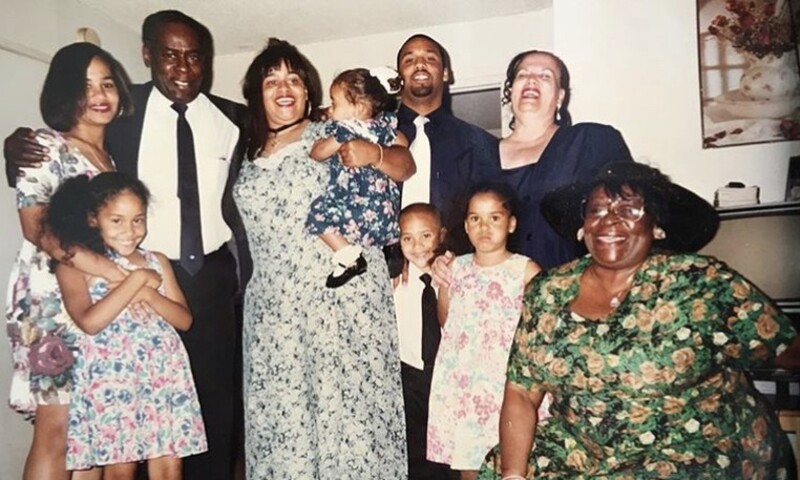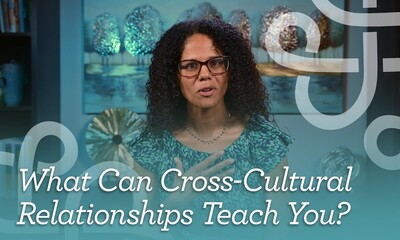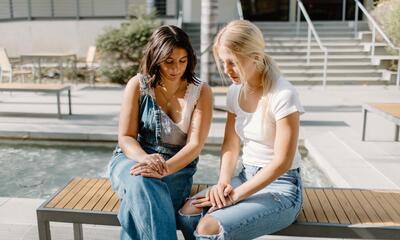Three Practical Steps to Instill Cultural Awareness and Sensitivity

"Systematic narratives can only be changed if we each, in our own communities, have the conversations. That starts in our homes." Marriage and Family Therapist Jennifer Jones shares her experience growing up biracial and how she learned to embrace diversity. In light of this week's events, today's blog post is a re-published article from last year.
I want to begin by pointing out that my experience is just one of many.
Our mother married our father during a time when interracial marriage was unacceptable, in 1969, two years after interracial marriage was legalized, and most of her family disowned her. Growing up, she told us, "You're Black because your father is Black," and I never understood why she didn't urge us to identify as both White and Black, or biracial. I know she did the right thing, and she did what she knew was best, based on her encounters of racial discrimination.
We don't know anyone from her family. Our mother’s family on both sides were from Russia, with her parents being first-generation Americans; she was raised Jewish. My siblings and I desire to find her family one day with the hope that someone in the family line has challenged and changed that part of their story. Our father passed away when I was 9 years old. We only know a handful of people from our father's family, and the extended family resides in Texas. On his side, we are told there is also Cherokee Indian in our bloodline. I think of the pain my mother must have carried raising Black children in this world. I think of what it may have been like for her being raised up in a family plagued with racist beliefs. Yet, she chose love, and encouraged us to embrace our Blackness. People will always see me as a woman of color, and I am proud of that.
My racial identity has developed through a lifetime of relationships with family, friends, teachers and mentors. I attended schools abundantly black and brown. Nevertheless, amongst my childhood peers, I felt a sense of not being enough — not Black enough, and certainly not White. My Whiteness was either disproportionately valued, or frankly rejected. Common statements I heard in my childhood pertained to prettiness, or having “good” hair, or being intelligent, which was attributed to the fact that I am mixed with White. If I was interested in this music as opposed to that music, I was White. At times, Black girls of a deeper skin tone assumed I was arrogant.
"I attended schools abundantly black and brown. Nevertheless, amongst my childhood peers, I felt a sense of not being enough..."
Some Black people have been shocked to find out I comb my daughters' hair well because it is of a different texture than mine. There have been times when I’ve had to correct my mom’s thinking errors around race and identity (i.e. her mentioning “good” hair).
I understand the painful history that created such divisions within Black communities. I think this all speaks to how susceptible we are as humans to learn and then become entrenched in hurtful ideology. It’s difficult to hear my White friends express discomfort discussing issues of race, even to the point of avoidance, but it’s also an opportunity to meet them where they are and pray for time and space to continue the conversation. In a way, my biracial identity allows for a bridging of gaps.
Systematic narratives can only be changed if we each, in our own communities, have the conversations. That starts in our homes. In my home, my children and I are blessed and grateful to have a front row seat witnessing a present Black father every day. My father was present, as well. In our home, there is living proof that dismantles the message that Black fathers are absent. We strive to educate our children on history in an age-appropriate, expand-as-they-grow, honest and inclusive way. We highlight the beauty, richness and strengths of our people. Reading is fundamental to helping children embrace their culture and heritage. A few children’s books we have in our home are: I’m a Pretty Little Black Girl by Betty K. Bynum, I Like Myself by Karen Beaumont, Daddy Calls Me Man by Angela Johnson, and Bright Eyes, Brown Skin by Cheryl Hudson. When we go to children’s birthday parties and books are requested over toys, we aim to purchase culturally uplifting books. We have playdates with other families, attend museums and community events, and family gatherings — food, music and shared stories are powerful agents of cultural connection.
"Systematic narratives can only be changed if we each, in our own communities, have the conversations. That starts in our homes."
Connection through community is critical in raising culturally attuned children. Through relationship, we learn about who we are and gain a sense of belonging. As parents, we cannot control everything our children are exposed to, but as their first and primary teachers, we are actively teaching them about racism. We also learn about differences. Love and hate are learned.
These are some practical action steps for parents of biracial children and parents of White children who want to instill cultural awareness and sensitivity:
1. Examine your own cultural biases. We all have them. Literature, documentaries and films are a good starting point, but in vivo experiences (i.e. community events, museums, small groups at church) have the most impact, and can easily be a family affair. Christian authors John Hambrick and Teesha Hadra wrote a book, Black and White: Disrupting Racism One Friendship at a Time, that may lend additional insight.
2. Talk about differences explicitly and intentionally, being mindful of the language you use. Use language that is color-conscious as opposed to color-blind, or racist. Celebrate your biracial identity. Acknowledge your privilege and use it for good. Ask and don’t assume you know someone else’s experience.
3. Notice who your child’s peers are in school, at church and on social media — and get curious! By asking questions about who their friends are, what makes for a good friend, and how they handle challenges amongst their peers, a dialogue about differences can begin. This can also be an opportunity to help transform the language they use around diversity.
Repeat steps 1, 2 and 3 until this lifelong class is dismissed. We are all made in his image. He died on the cross for all sinners. In Revelation 7:9–10, there’s a vivid picture of what we have to look forward to:
After this I looked, and there before me was a great multitude that no one could count, from every nation, tribe, people and language, standing before the throne and before the Lamb. They were wearing white robes and were holding palm branches in their hands. And they cried out in a loud voice: “Salvation belongs to our God, who sits on the throne, and to the Lamb.”
With that as our glimpse into heaven and eternity, we should be moved to embrace diversity on earth, here and now.



